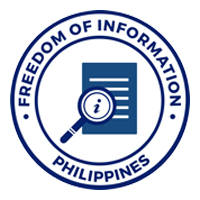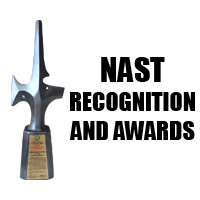The National Academy of Science and Technology, Philippines (NAST PHL) through its Engineering Sciences and Technology Division (ESTD) led a focus group discussion (FGD) on the “Past, Present, and Future of ICT Infrastructure in the Philippines” last December 4, 2015, at Millennium Salon, The Manila Hotel. Academician (Acd.). William G. Padolina, President of NAST welcomed the participants and highlighted the importance of the ICT Infrastructure in the economic development of the Philippines.
Academician Jose B. Cruz, Jr., member of the ESTD, and the convenor of the FGD, described the objectives of the FGD, and the relationship of the FGD on ICT Infrastructure to the other engineering infrastructures such as energy, transportation, and water, pointing out the importance of the ICT Infrastructure in its own right, and its importance to the effectiveness of the other infrastructures. The past, present, and future of engineering infrastructures will be presented by the ESTD during the 38th Annual Scientific Meeting (ASM) in July 2016, to support the ASM theme “Past, Present, and Future”. The Social Science Division (SSD) will be the lead division for the ASM. Acd. Cruz further thanked his colleagues, Acd William T. Torres and Acd Eliezer Albacea, for their assistance in planning the FGD.
The FGD was divided into two parts: (1) present status of the national ICT Infrastructure and the (2) future challenges in developing the national ICT infrastructure.
Director Philip Varilla of the National ICT Governance Service, Information and Communications Technology Office-DOST was the speaker for Part 1 which was moderated by Acd. Cruz. Director Varilla, in his presentation “Broadband in the Philippines: A Closer Look”, gave the importance and impact of broadband to the country’s economy and described the Philippine broadband landscape to consist of different elements that use high-speed connectivity to interact with each other.
On the local networks’ domestic connectivity, he reported that PLDT’s Domestic Fiber Optic Network infrastructure build-up supports the sustainable growth of wireless broadband, which is crucial for mobile customers as well as Ethernet services, particularly for multinational corporations requiring high bandwidth capacity. Globe Telecom operates and maintains various fiber optic networks, which includes two Fiber Optic Backbone Networks connecting the entire Philippine archipelago.
On the other hand, Telecommunications Infrastructure of the Philippines (TELICPHIL), a consortium of seven telecom companies, namely, the BayanTel, Smart, Globe, Extelcom, Digitel, Eastern Telecommunications Philippines, Inc. (ETPI) and PT&T, has the National Digital Transmission Network (NDTN), which connects Northern Luzon to Southern Mindanao. Director Varilla emphasized the importance of international fiber linkages to connect the Philippines to the rest of the world and the internet, to allow information and communications services between people in the Philippines and the rest of the world.
A 23% increase on the average connection speed (3.1 Mbps) compared to the same quarter of 2014, which had an average connection speed of 2.38 Mbps, was reported. In addition, a positive 26% quarterly change in average peak connection speed was noted. However, a study conducted by the LIRNEasia about the state of the internet in the Philippines showed that since 2011, the basic data plans of the three major ISPs have not met their advertised connection speed.
Acd. Cruz presented a summary of the paper submitted by Dr. William Emmanuel S. Yu and Mary Grace Mirandilla-Santos of the Philippines Chapter of the Internet Society who were not able to attend the FGD. Yu and Mirandilla described the internet infrastructure as divided into three segments: (a) International Gateways (IGFs) or Landing Stations, (b) Middle Mile transport, and (c) Last Mile or Network Edge. They noted that the few landing stations are owned by PLDT or Globe Telecom. Moreover, the middle mile transport is also largely owned by PLDT and Globe. The middle mile transport or back haul is a limiting factor in the speed and availability of the internet.
During the second part of the FGD, focal persons Acd. Cruz and Torres proposed three major questions for discussions, these were: (1) Do we have a National ICT Development Plan?; (2) Who is mainly responsible for monitoring, implementing and updating of such plan?; and (3) What plans should it contain? Participants from the government, private sector, and the academe shared their insights, recommendations, and suggestions for the development of the country’s ICT infrastructure. Mr. Jet Montablan of the DOST shared the Department’s initiatives, plans and roadmaps for 2020 and mentioned that coordination among the regional offices and companies to utilize the infrastructure is on-going.
Acd. Torres recommended the need for an ICT infrastructure to mainstream ICT development and stated that presently, there is no independent ICT department to develop this. Mr. Varilla suggested the inclusion of a chapter on ICT in the Philippine Development Plan, which should contain infrastructure development and the dynamics of supply and demand. Department of Health’s director Crispinita Valdez shared that DOH has already benefited from some ICT-related projects and suggested to the academe to look at priority sectors that could benefit from ICT, such as health, etc. Director Paolo Noel Paje of the UP Information Technology Development Center mentioned that the country should first consider a technology innovation system since we have a number of IT personnel but we do not have the quality due to budget constraint. Mr. Robert Aquino of Globe Telecom discussed the need for a cabinet-level champion on ICT and suggested using the minutes of past government meetings to push for the creation of an ICT department. DOST-ICTO’s Ms. Alona Isidro shared DOST’s project with DPWH for infrastructure installation. She recommended that the academe help guide the engineers on infrastructure standards. Yu and Mirandilla of the Internet Society, in their paper, suggested that there is a need to revamp the regulatory provisions that are outdated. Much of regulation largely applies to the old telephone service whereas what the country needs pertains to value-added data service. Acd. Torres proposed commissioning a study that will plan a national ICT program before recommending the establishment of an ICT department.
Dr. Allan A. Sioson, Outstanding Young Scientist 2010 and professor and dean of the College of Computer Studies, Ateneo de Naga University, synthesized the discussions of the activity. National Scientist Mercedes Concepcion, NAST PHL Vice President and Social Sciences Division’s chairperson, in her closing remarks, called the attention of the future administration about the critical issues in ICT Infrastructures which are very important to an effective national development.












